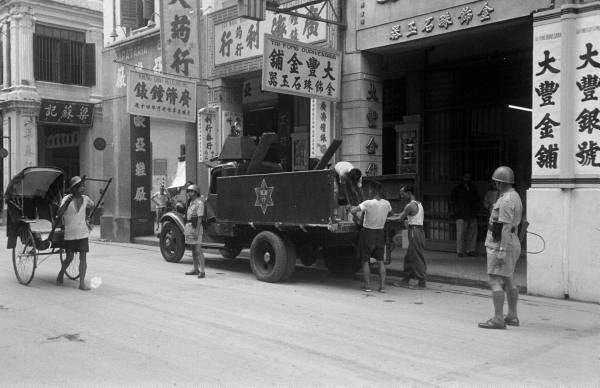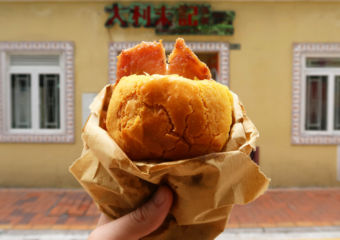Featured image source: Macau Antigo blog
Every country has its own police forces. Amongst other things, they patrol and keep the peace of cities and countries. There are different kinds of authorities and Macau still follows the same structure left by the Portuguese government centuries ago. Here, the police are divided into categories, including military, public safety (PSP) judiciary, maritime, and others. The judiciary division deals with crimes such as robbery and theft, drug-related issues, and more whereas the maritime forces patrol Macau’s waters preventing any illegal encroachments, as well as due processes in customs. The PSP (Polícia de Segurança Pública) ensures everything runs smoothly on a daily basis around the city. We let you in the history of this institution, its foundation, and some interesting details. Read on and find out more!
From 1691 on
PSP’s national day is commemorated on March 14 because this was the day it was founded, in 1691. As one can see, the existence of authority forces remounts to the settlement of the Portuguese in Macau. The first officers were members of the Portuguese maritime troops, and the number rose when the government felt the need to start patrolling the land and not just sea, especially at night, an action taking place on March 14.
The government later establishednopen spaces from where these officers could work, called “casa-forte” (can be translated to “the station”) in three main areas: Sé (close to Senado Square), São Lourenço (close to St. Lawrence’s Church), and Santo António neighborhood. Each station was made up of a captain and seven officers (called “praças” in Portuguese). However, these didn’t last long: in 1754, Senado sent India’s vice-king a request to abolish them, which happened in December of that year. It wasn’t until 1822 that the government decided to open these stations again, mainly because of uprisings from the liberals. Each station had 20 men.

Moorish police officers. Source: Macau Antigo blog.
Before these were re-established, the group of policemen from the abolished stations were substituted–in 1784–by a garrison of 150 troops from India. This battalion patroled the city and other tasks, including defending it from exterior forces. In 1869, the police force was considered at the military level, including in terms of hierarchy. This was also the publishing year of the first-ever legal framework regulating the Macau police force’s system.
A few years after, the Viscount S. Januário proposed the inclusion of Moorish people–a term used to described people from South Asian places such as Goa, a Portuguese colony at the time. As such, 41 of them arrived from the Indian region of Goa and stayed at the Moorish Barracks, in Barra area, inaugurated on August 1874. Designed by Italian architect Cassuso, the building housed the Moorish section of the Macau Police Force, but the organization later gave the edification away to the Maritime Police.
A few years after, on May 13, 1910, there was a new group of policemen in the city called the Regent Prince’s Batallion (Batalhão Príncipe Regente in the original Portuguese). It was composed of 400 men housed at the now-demolished Casa da Alfândega and Mount Fortress.
The Macau police had various names and were organized in different ways across time: Portuguese governor Carlos Eugénio Correia da Silva even dissolved the Macau Police Force to then create the Macau Police Guard, which would be housed at the S. Francisco Barracks–behind Clube Militar. In 1912, the government felt the need to organize yet another police force, the Civil Police, which followed the creation of the Security Police.
Also read: Moorish Barracks: A Transcultural Landmark in Macau
The Bazar Police
In 1857, some rich local merchants and businessmen got together to hire, on their own, a group of policemen that would patrol their companies and guard their goods, and this area was known as Bazar–where Pagode do Bazar is, close to Rua de Cinco de Outubro. This patrolling group was then called Bazar Police and recognized by the local government as an official unit. The initial group of 50 men grew to 100. In 1861, the Portuguese governor at the time issued an official decree stating its constitution, and the Macau police were renamed the Macau Police Force (Corpo de Polícia de Macau in the original Portuguese). With it came a hierarchy of policemen starting with the commander, officials, and so on.
Although Macau’s police force started with the patroling of the Pearl River Delta, this section only became official in 1892 with the establishment of the Sea Police Section (Secção de Polícia de Macau in the original Portuguese) managed by the Land Section’s commander.
Female Power
Another interesting fact about the Macau Police Force is the recruitment of women, which only started in October 1974, a few months after the Portuguese revolution of April that set the country free of Salazar’s dictatorial regime. Amongst hundreds of female applicants, only 42 were able to pass on all the exams, which included physical exercises, dactilography, culture, a sanitary inspection, an interview, and more. After these, they had to undergo a three-month training program, after which 40 graduated as policewomen. They were the first-ever women to become part of Macau’s police forces.
According to the words of Wong Choi Peng, one of those women–who became a 2nd Commander of PSP from 2001 to 2003–the monthly wage was attractive and the work looked exciting, which led to a high number of applicants from different backgrounds and education levels. Wong explains it was one of the best-paid jobs in Macau, around MOP $600 per month, while a teacher earned around MOP $300. “I also remember that there were few sports pavilions, so we had to do all our physical training in Portas do Cerco, Mong Há, and Guia Hill, where we usually ran. We attracted the locals’ attention every time we trained, and also during the internship period when we did roadside operations”, she added (to read the whole text in Portuguese, click here).
Wong believed that the introduction of female agents was very fruitful, especially when it came to solving issues involving women and children, being that it was sometimes easier to talk to policewomen rather than policemen.
Asylum in Taipa circa the 1950s. Source: nenotavaiconta blog.
An asylum founded by a policeman
It was the then PSP’s commander, Sigismundo da C. Revês, who had the idea to establish, in Taipa, a center for those in need (see image above). Being so, the Asylum for Beggars and Wanderers (Asilo para Mendigos e Vagabundos in the original Portuguese) opened its doors in September 1951. Managed by the islands’ administrator, it welcomed people over 16 who were unemployed or had other problems. Later managed by PSP, it was divided into sections: drug abuse treatment, retreat center, children’s services, psychiatry ward, and women’s services. The asylum became an important tool to help underprivileged people in Macau.
Public Security Police Force Headquarters Praceta de 1 de Outubro, Macau, +853 2857 3333, www.fsm.gov.mo/psp/eng



































